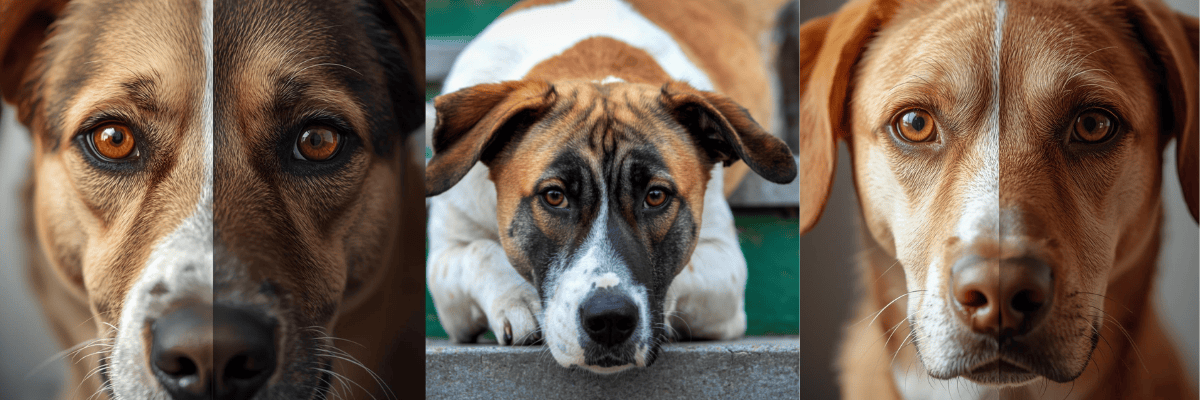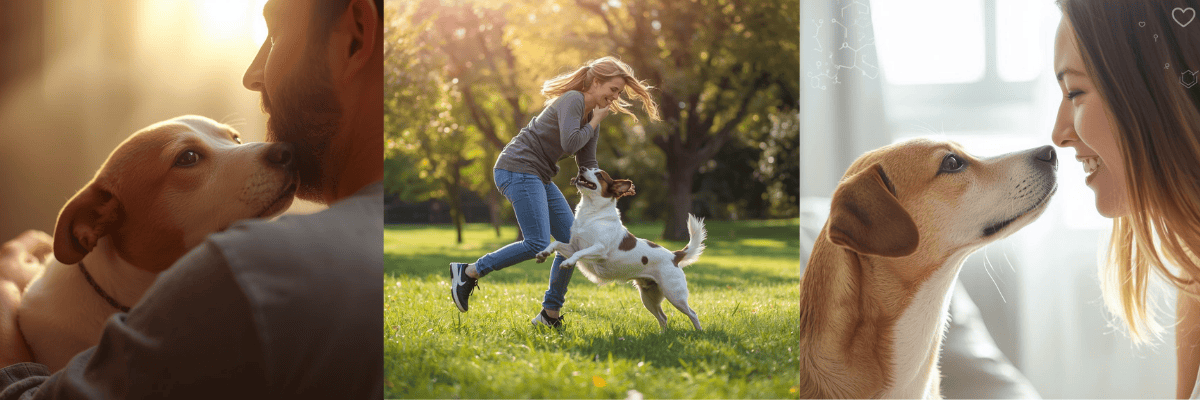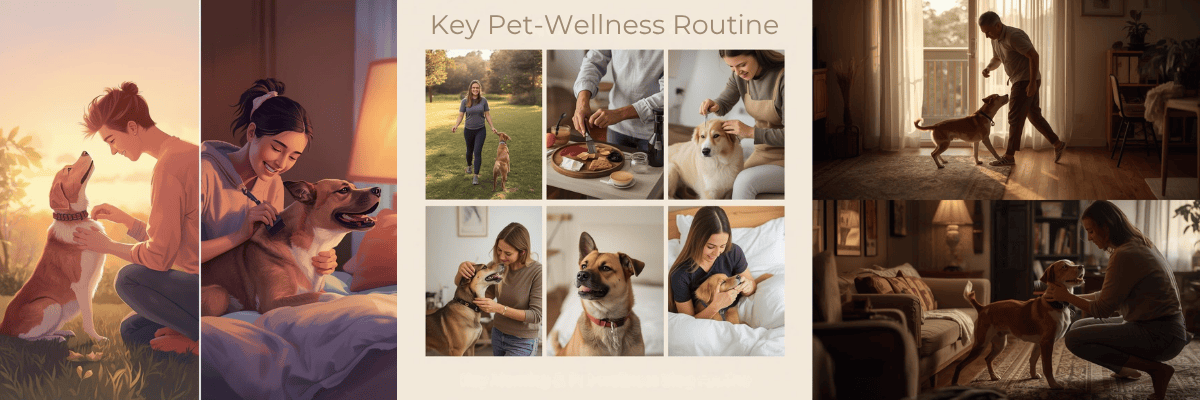Introduction
Dogs communicate more with their eyes than many owners realize. A simple gaze can convey affection, curiosity, or even a warning. Understanding the meaning behind your dog’s eye contact is essential for building trust, preventing misunderstandings, and deepening the bond between you and your furry companion.
While a soft, relaxed look can show love and connection, a hard stare might indicate stress, fear, or aggression. Reading eye contact in isolation isn’t enough—context, body language, and situation all play a role in interpreting what your dog is truly trying to communicate.
In this post, we’ll explore the fascinating science behind dog eye contact, how to differentiate between signals of love and threat, and tips for using gaze to strengthen your relationship with your dog.
The Science of Dog Eye Contact
Dogs are remarkably attuned to human faces and gaze, a trait that has developed over thousands of years of domestication. Eye contact plays a key role in communication, both with humans and other dogs.

Reading Human Faces
Dogs can recognize human emotions by observing facial expressions and eye movements. This ability helps them respond appropriately to their owners’ moods and intentions.
The Role of Oxytocin
Research shows that mutual eye contact between dogs and humans increases levels of oxytocin—the “bonding hormone”—in both parties. This hormone strengthens the emotional connection and can explain why a gentle gaze can feel so comforting.
Brain and Behavior Studies
Studies have found that dogs’ brains react to human gaze similarly to how humans respond to social signals. They pay attention to subtle cues, like the direction of your eyes, to interpret your focus, intentions, and emotions.
By understanding the science behind eye contact, we can better appreciate that your dog’s gaze is not random—it’s a sophisticated form of communication.
Signs That Eye Contact Shows Love
Not all dog stares are threatening. Many are expressions of trust, affection, and connection. Recognizing these signs can help you strengthen your bond with your furry friend.

Soft, Relaxed Eyes
- Gentle, squinty eyes without tension around the eyebrows.
- Pupils normal in size and not dilated.
Slow Blinking
- Slow, deliberate blinks signal relaxation and comfort.
- Often paired with calm body posture and wagging tail.
Direct Gaze with Relaxed Body Language
- Dog maintains eye contact without stiffness or tension.
- Loose body posture, wagging tail, and ears in neutral position.
Context Matters
- Occurs during calm interactions, play, or training.
- Shows your dog is engaged, attentive, and emotionally connected.
Mutual, gentle eye contact can increase oxytocin in both dog and owner, reinforcing trust, love, and social bonding.
Signs That Eye Contact Indicates Threat or Aggression
While soft, relaxed gazes show love, certain types of eye contact can signal discomfort, fear, or aggression. Recognizing these signs is crucial for safety and understanding your dog’s emotional state.

Hard, Fixed Stare
- A prolonged, unblinking gaze often indicates dominance, fear, or aggression.
- Usually accompanied by a tense or rigid body.
Accompanying Body Signals
- Raised hackles, stiff posture, growling, or baring teeth.
- Tail may be raised or bristled, ears forward or pinned back.
Contextual Cues
- Often occurs around food, toys, territory, or perceived threats.
- Dogs may also stare to warn or assert themselves if they feel threatened.
Importance of Reading Full Body Language
- Eye contact alone isn’t enough; always consider posture, tail position, and facial expressions.
- Misinterpreting a threatening stare for affection can lead to unsafe interactions.
By paying attention to these cues, you can avoid escalating tension and respond appropriately to your dog’s emotional state.
Subtle Eye Signals to Watch For
Not all messages are obvious. Dogs often use subtle eye movements to communicate stress, discomfort, or appeasement. Paying attention to these signals helps you better understand your dog’s feelings.
Avoidance of Gaze
- Looking away or turning the head can indicate submission, nervousness, or a desire to de-escalate a situation.
Whale Eye
- The whites of the eyes (sclera) become visible when a dog is anxious or fearful.
- Often occurs with tense body posture or during stressful situations.
Squinting or Soft Blinking
- Slow, gentle blinks signal relaxation and trust.
- Rapid blinking or squinting may indicate discomfort or irritation.
Yawning or Head Turning
- Dogs sometimes combine eye signals with yawns or slight head turns to show stress or avoid confrontation.
By observing these subtle cues along with body language, you can interpret your dog’s mood more accurately and respond appropriately.
Cultural and Breed Variations
Dogs’ comfort with eye contact can vary depending on breed, individual personality, and even cultural norms regarding human-dog interactions.
Breed Differences
- Long-snouted breeds (like Greyhounds) often maintain more eye contact.
- Flat-faced breeds (like Bulldogs) may naturally avoid prolonged gaze due to facial structure.
- Some breeds are more expressive with their eyes, while others communicate more through body posture.
Cultural Differences
- In some cultures, direct eye contact with dogs is encouraged as a sign of bonding and attention.
- In others, prolonged eye contact may be discouraged to avoid signaling dominance or threat.
Interacting Safely
- When meeting unfamiliar dogs, avoid prolonged staring until the dog is comfortable.
- Observe their response to gauge whether the gaze is friendly or defensive.
Understanding these variations helps prevent misinterpretation and promotes safer, more effective communication with your dog.
How to Use Eye Contact to Strengthen Bond
Eye contact can be a powerful tool to enhance your connection with your dog—when used appropriately.
Gentle, Calm Gaze
- Maintain soft, relaxed eye contact during calm interactions.
- Avoid staring too long or intensely, which may be perceived as threatening.
Rewarding Relaxed Eye Contact
- Praise or offer treats when your dog looks at you calmly.
- Positive reinforcement helps your dog associate eye contact with pleasant experiences.
Contextual Awareness
- Use eye contact during training, play, or bonding activities.
- Recognize when your dog looks away or shows subtle stress cues, and give them space if needed.
By combining attentive observation with positive reinforcement, you can build trust, strengthen your relationship, and communicate effectively through your dog’s gaze.
Conclusion
Dogs use their eyes to communicate a wide range of emotions, from love and trust to fear and aggression. Understanding the nuances of eye contact—whether soft and relaxed or hard and fixed—can help you interpret your dog’s intentions and respond appropriately.
By paying attention to context, body language, and subtle cues like blinking or whale eye, you can differentiate between affectionate and threatening stares. Using eye contact wisely, along with positive reinforcement, strengthens your bond and fosters a trusting, healthy relationship with your dog.
Ultimately, learning to read your dog’s eyes allows you to understand their feelings, enhance communication, and ensure both safety and emotional connection.




Leave a Reply